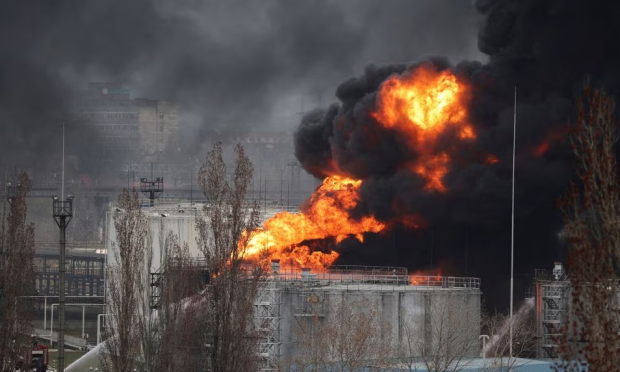Oleg Zhdanov, a Ukrainian military analyst, claimed that his nation's military has noticed a change in Russia's missile attack tactics, possibly due to a reduced inventory of available missiles. Zhdanov pointed out that short-range attacks are now preferred and S-300 missiles are being used in frontal city offensive strategies. Essentially, he added, Russia is bringing the battle closer to the front lines and fewer missiles are aimed inland.
The Kiev-based defense expert, citing Ukrainian intelligence, further claimed that the Russians are acquiring 40 to 50 missiles every month. Consequently, there is still concern about the possibility of another large-scale missile attack. The future missile attack may be accompanied by drones, including kamikaze drones like the Shahed-136, Zhdanov said.
He also said that while the Ukrainian air defense system is capable of countering drones, countering missiles is a much more complex task.
However, he noted that air defense systems capable of countering ballistic missiles are expected to be operational soon, which will simplify things to some extent for Ukraine. “That should make things easier. I'm not saying this will solve the problem, but it will make things easier," he added. The Ukrainian expert did not specifically specify the name of the air defense system that would help counter ballistic missiles. However, he may have been referring to the Patriot air defense system, as it is a well-known weapon platform used by various countries.
Ukraine has repeatedly urged the United States to provide a sophisticated air defense system to protect against potential Russian attacks. The US promised to deliver a Patriot array to Ukraine in late 2022, and Ukrainian troops began training for it in Oklahoma in January 2023.
The Pentagon announced last week that a group of 65 Ukrainian servicemen had completed training on the Patriot air defense system in the United States and returned to Europe. US officials recently said the promised Patriot missile defense systems will be delivered to Ukraine in the coming weeks.
The Patriot air defense system is manufactured by Raytheon, a US-based aerospace and defense company. Originally designed to intercept high-altitude aircraft, it was later modified in the 1980s to address the emerging threat of tactical ballistic missiles.
Russian missiles pose a threat to Ukraine's energy infrastructure
On March 9, Russia launched a massive missile attack on Ukraine, deploying an array of missiles and Iranian-made Shahed suicide drones.
The attack resulted in a series of explosions in several Ukrainian cities, including the capital, Kyiv. The missile attacks also affected Ukraine's energy infrastructure. However, Ukrenergo, a Ukrainian electricity transmission system operator, said restrictions on electricity use in the Kyiv, Zhytomyr and Kharkiv regions were imposed due to damage caused by a Russian missile attack on March 9.
Ukrenergo claimed that currently there are no restrictions on energy consumption in Ukraine. Russia launched a series of widespread missile attacks on civilian infrastructure in Ukraine early last October. The aim of these attacks was reportedly to prevent Ukrainians from accessing heating, electricity and water during the winter season.
Ukrainian authorities reported that a series of more than a dozen massive missile attacks had in some places damaged up to 50% of Ukraine's energy system.
During the winter season, significant areas of the country had to endure frequent planned emergency outages, which were imposed to compensate for the shortfall in generation capacity and restore stability to the electricity grid.
However, by March, there were signs that Russia's offensive against Ukraine's infrastructure was losing steam. There were fewer missiles used in each attack and the attacks became less frequent over time.
Ukrainian experts have suggested that Russia may have exhausted its stockpile of high-precision missiles and must now wait until it can produce more missiles before launching another large-scale attack.
In addition, Russia appears to be increasingly dependent on Shahed kamikaze drones, which are of Iranian origin. These drones are most often used in night attacks in Kiev, as well as in other regions of Ukraine.
Since Russia began its missile attacks, Ukraine has acquired modern air defense systems from the US and allied countries. As a result, the country's ability to shoot down both cruise missiles and bombers has increased significantly.




